“Why Cycles got its start in early 2016 in Ogden, Utah as the common idea of a group of cycling enthusiasts and business associates: Adam Miller, Jason Schiers, and Ben Craner. Focused on creating high-end bikes that reflected the joy they found in cycling, the three began dreaming up and sketching out beautiful bikes geared for luxury, comfort, fun, and speed. They discussed improved methods for constructing frames, customizing components, and finding a streamlined distribution system for getting the finished products into the right customers’ hands. Soon after, Adam formally founded Why Cycles to meld these preliminary ideas into a boutique business model with a focus on simplicity: no marketing fluff, no unnecessary product features, and no glitchy sales tactics. Why stands for straightforward, clean, eye-catching bikes done right.”
“Never look at any dirt road the same way”
“The R+ extends the limits of what other drop bar bikes can do. The Why engineers optimized this bike for use with 700x40c tires, but gifted it with clearance for 700×44 or 27.5×2.1” wheels. The R+ is extremely versatile: it’s at home on gravel roads and long pavement rides where comfort is paramount. However, don’t let that deter you, speed demons. This bike can hold its own on the cyclocross race track and rides like a jaguar for those of you that want to slap some slick road tires on for super-fast fun.”
Why Cycles make the R+ available in three different build kits; SRAM Rival 1x, SRAM Force 1x and SRAM Force Carbon Kit 2x. Why Cycles are proponents of the Lauf Grit Fork, and offer it as an upgrade over the standard on every build, Enve’s Cross Disc fork (which happens to be one of the best rigid carbon forks going).
If a complete build kit isn’t your thing, Why Cycles make the R+ available as a frame, frame and Enve fork, or frame and Lauf Grit fork.
Like a lot of modern gravel bikes, Why Cycles choose to run their rear brake cable / hydro housing internally. Nothing special there.
Why chooses to run the rear derailleur cable internally as well. The traditional method is to run the housing inside the downtube, over the bottom bracket and exit somewhere on the drive-side chainstay. On the R+, the rear derailleur housing runs inside the top tube, a departure from the norm, to exit just ahead of the seat tube.
Above, the rear derailleur and rear brake housings crossover inside the frame, and exit on the appropriate side to continue their travel down the rear seat stays. Note the provision for rack and fender mounts.
Above, the rear derailleur housing exists cleanly just above the drive-side dropout. This style of routing is very reminiscent of a lot of earlier cyclocross bikes fitted with cantilever brakes, although most of those bikes ran the cables externally.
Above, the rear disc brake housing exits on the seat stay, with a direct and straight path to the rear brake caliper. Dropouts on the R+ are the 142mm x 12mm thru-axle standard. Why Cycles specs 160mm brake rotors at front and rear on all of their R+ builds.
Above, the Enve Cross Disc fork in this example is post mount. Post mount is now considered mostly an obsolete standard by much of the bicycle industry, but brakes mounted in this manner will bring you to a halt, just fine. Front thru-axle size is 12mm x 100mm.
The R+ also uses a regular English thread, 68mm bottom bracket shell. Win!
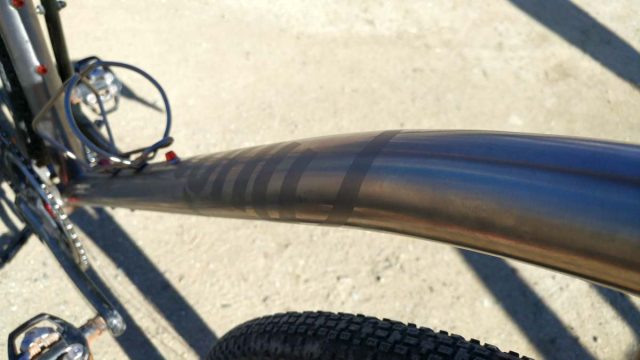
“The R+ has a few unique geometry features. Mainly, the bottom bracket drop and the reach. The BB drop affects how a bike corners and, combined with chainstay length, affects its stability. On the R+ the BB drop is just slightly more than other similar bikes out there, giving it a more stable, comfortable feel, yet making cornering feel more precise when initiated by the rider. The reach is slightly longer than similar bikes, which eliminates some toe-overlap (hitting the toe on the front tire in tight corners) and also optimizes handling by stealing some tactics from the mountain bike world- wider bars and shorter stems.”
Above, provision for a third water bottle cage on the downtube.
“We use the highest quality Grade 9 3/2.5 titanium for our frames’ tubing, and 6/4 titanium for the head tube, bottom bracket shell, and machined bits all over the frame.”
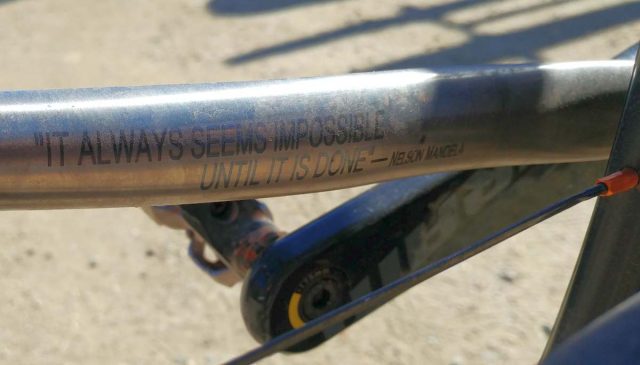
Above, sunlight made photographing this R+’s etching a little difficult, but the design is very cool and better seen in person.
Why Cycles have five bikes in their line up (they are more than just gravel), all titanium, so be sure to visit their website, linked at the bottom of this article.
Still more to come from Sea Otter 2018!


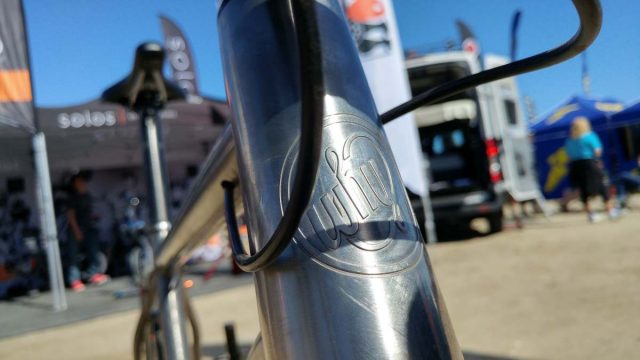
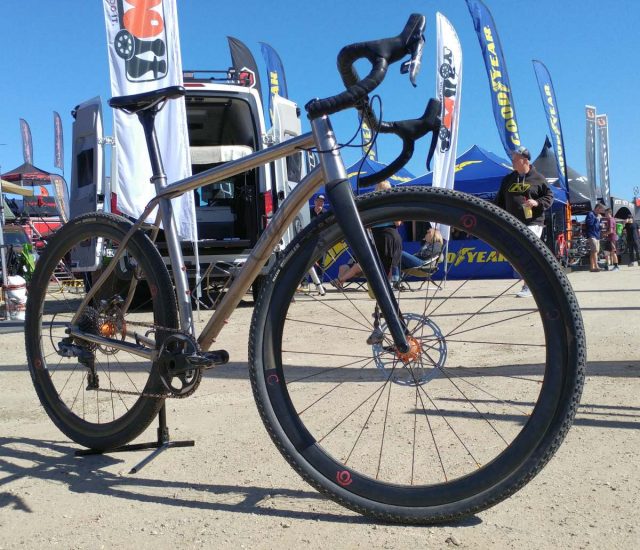
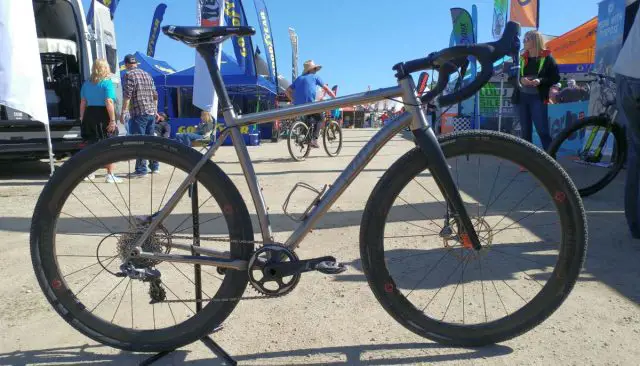
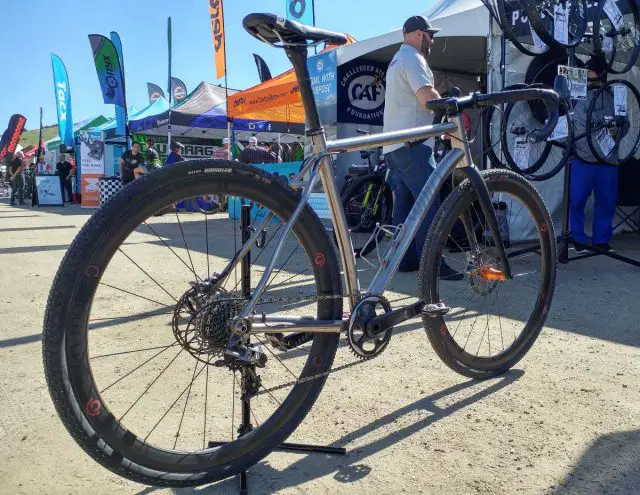
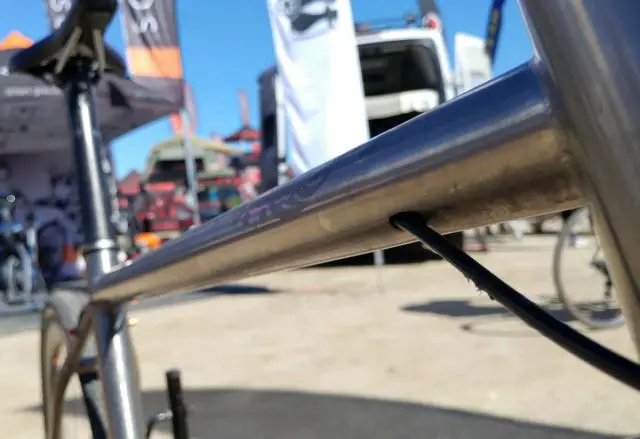
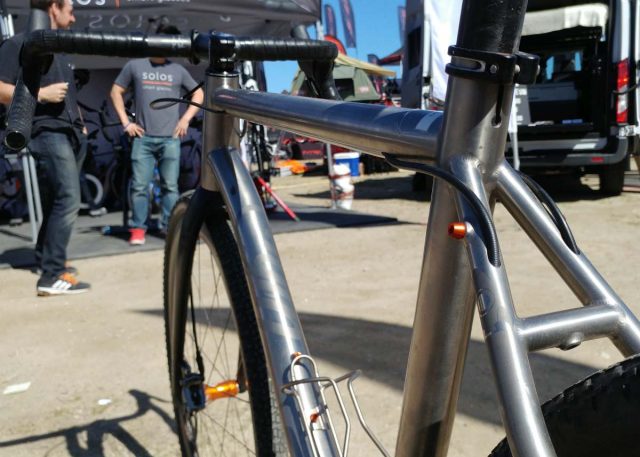
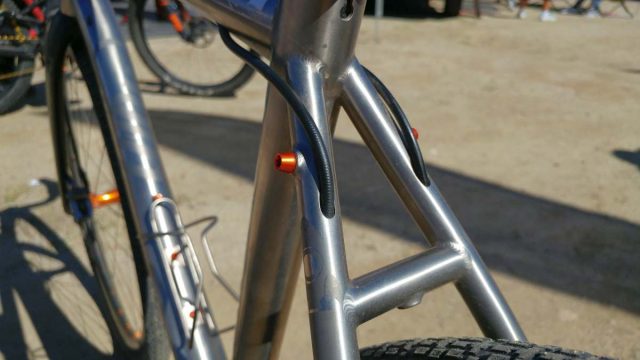
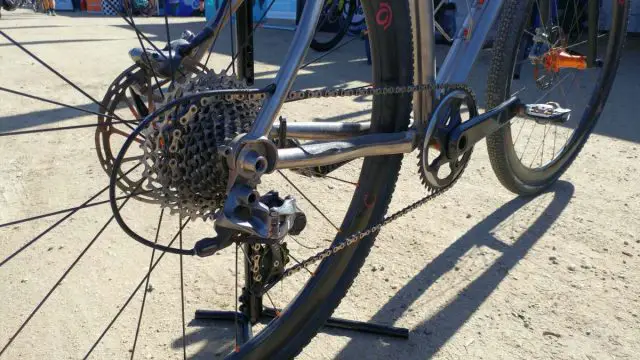
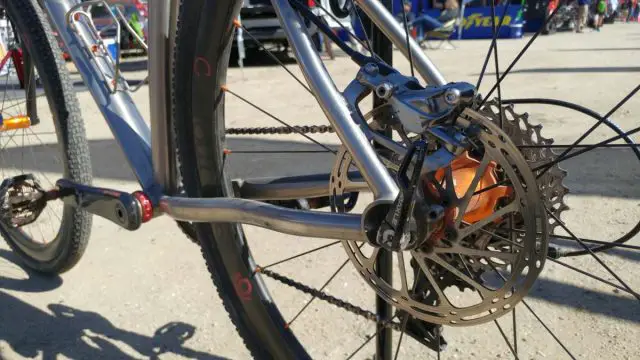
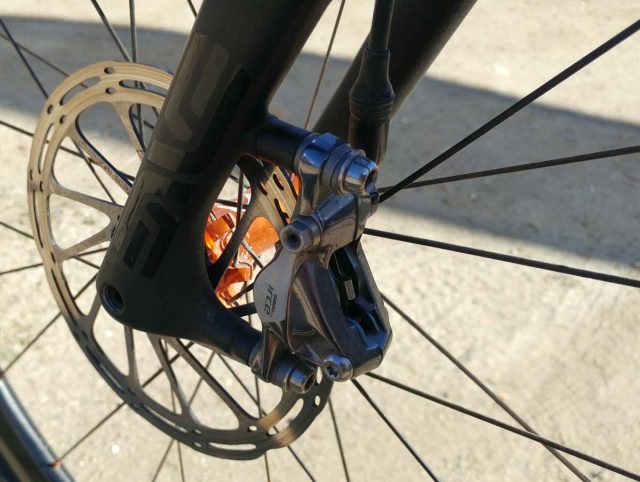
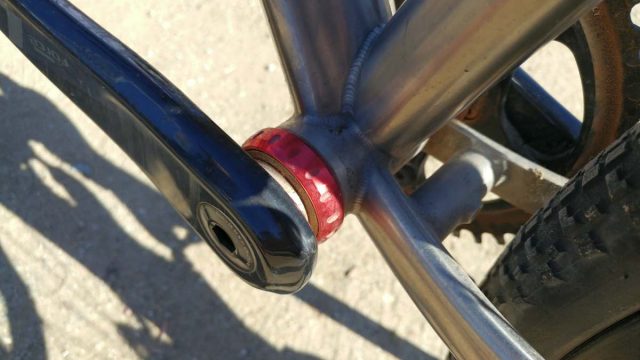
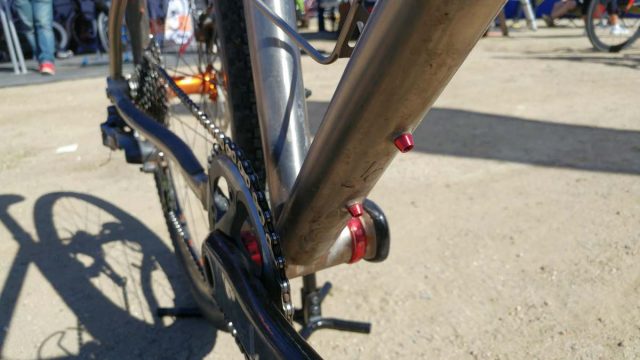
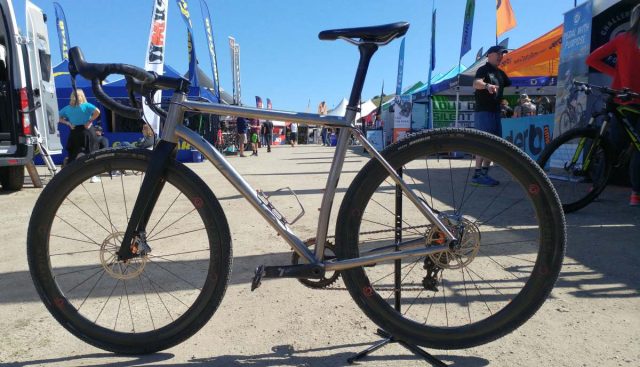
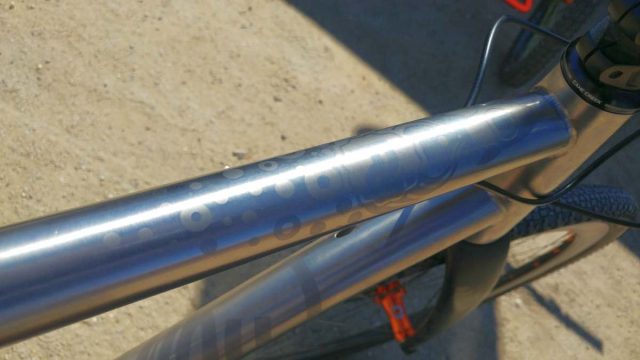
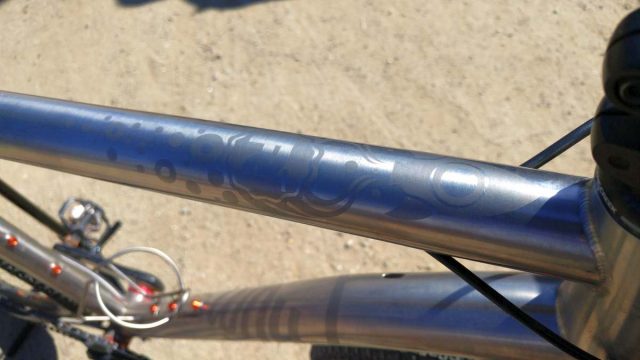
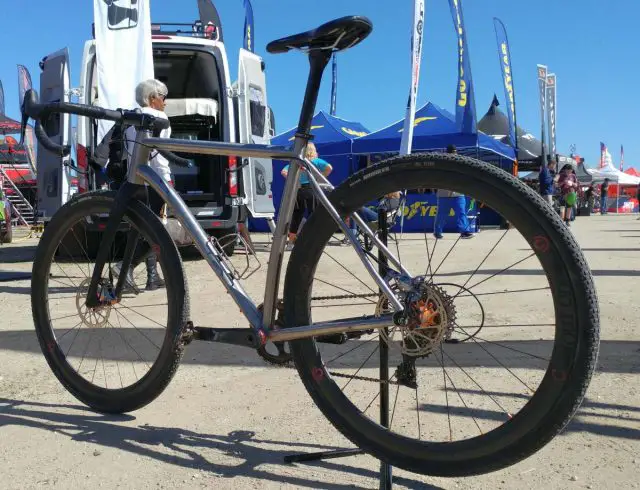
Boy, I didn’t know post-mount disc brakes were obsolete already. I’m probably obsolete already.
Nice bike, but I’m not sure anything bike related does justice to a Nelson Mandela quote.
I bought a Why R+ and had some issues with the company’s quality control. The bike arrived with scratches, brake issues, and the internal cabling rattled. They helped with some issues through my local bike shop but when I informed them I wasn’t satisfied I was met with attitude. I regret this purchase.
Sorry to hear about your bad experience.
Appreciate it. I’ll be selling the bike. The experience has left me so dissatisfied.